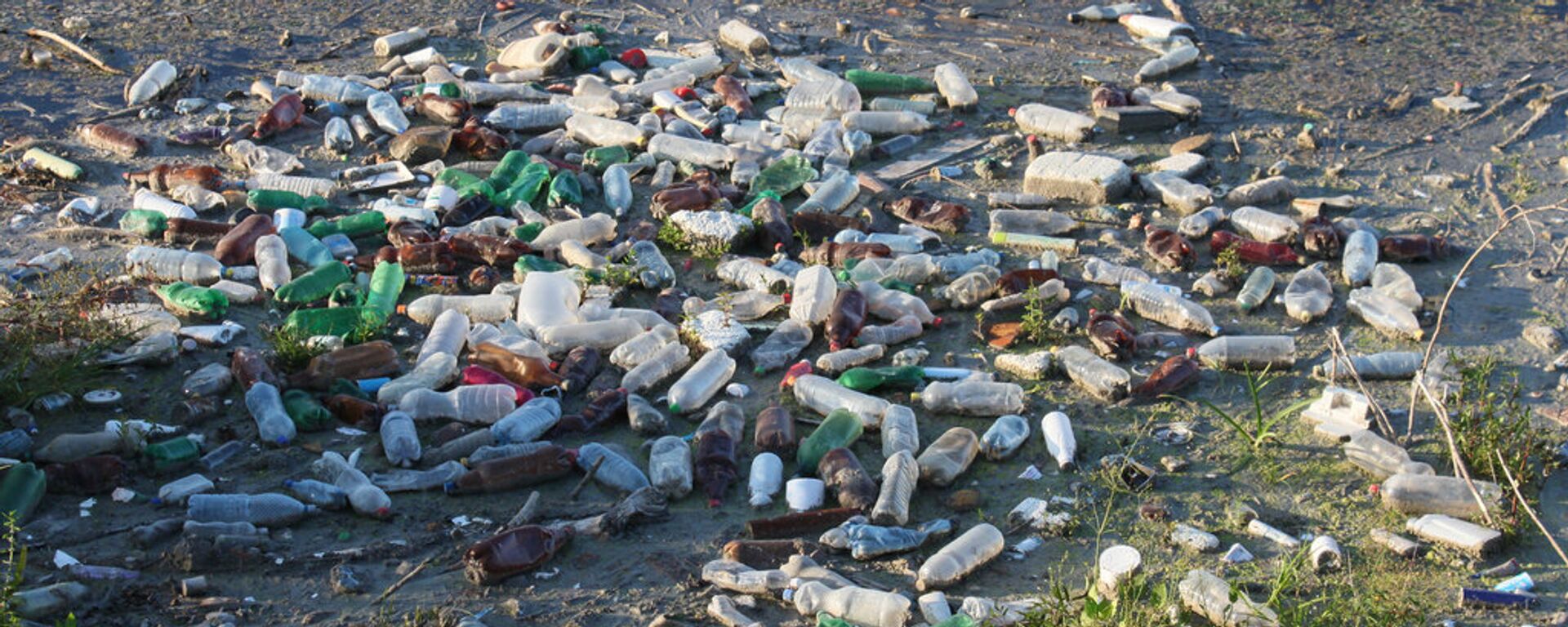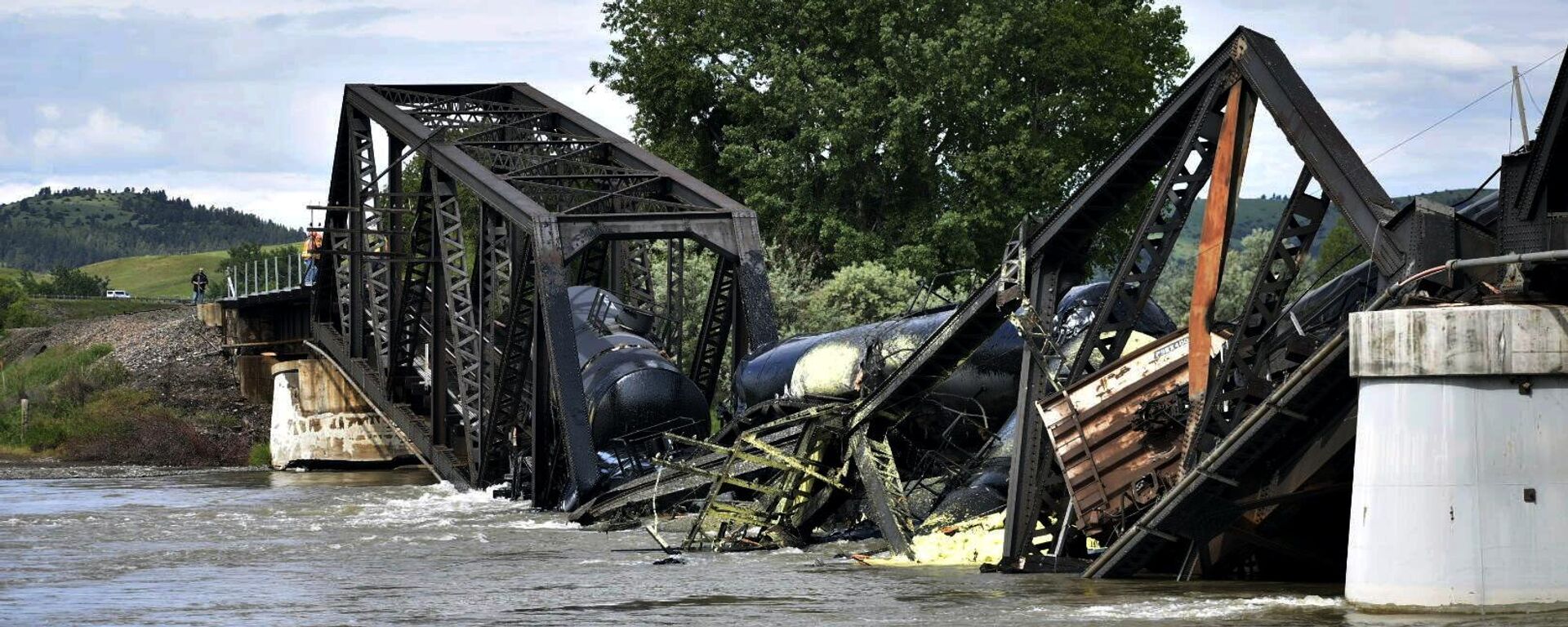https://sputnikglobe.com/20240218/raw-sewage-found-near-us-mexico-border-is-a-public-health-crisis-1116853576.html
Raw Sewage Found Near US-Mexico Border Deemed ‘Public Health Crisis’
Raw Sewage Found Near US-Mexico Border Deemed ‘Public Health Crisis’
Sputnik International
Public health researchers at the San Diego State University are raising the alarm after publishing a report which claims that billions of gallons of sewage is flowing through the Tijuana River.
2024-02-18T04:55+0000
2024-02-18T04:55+0000
2024-02-20T14:05+0000
us-mexico border
pollution
sewage
health crisis
water pollution
contamination
us
san diego
tijuana
california
https://cdn1.img.sputnikglobe.com/img/07e8/02/12/1116854306_0:127:3191:1922_1920x0_80_0_0_801137774a862045505cad37b294861f.jpg
Public health researchers at the San Diego State University are raising the alarm after publishing a report which claims that billions of gallons of sewage is flowing through the Tijuana River, and as a result is exposing communities located at the US-Mexico border to a series of harmful pathogens.The report notes that the Tijuana River and Estuary (TJRE) in the US, which empties in to the Pacific Ocean at Imperial Beach in California, "is severely contaminated by untreated sewage, industrial waste, and urban run-off due to inadequate infrastructure and urbanization and the watershed is classified as an impaired water body according to the US Clean Water Act,” the report writes.The health threats posed to those living nearby come from pollutants arising Mexico, including “human and livestock diseases eradicated in California, pathogens carrying antibiotic-resistant genes, and industrial and municipal chemicals not permitted to be discharged into the environment in California”.Current regulation is inadequate, the report says, but they add that “multiple studies” over the last decade by their own team at the university shows the presence of pathogens including SARS-CoV-2 and Hepatitis, and antibiotic resistant strains of E. coli and legionella in samples taken from the river which pose a risk to both humans and aquatic animals.Health concerns posed to the public could include tuberculosis, the report found. Mixed into the sewage also, were toxic chemicals including banned pesticides like DDT and chlordane and heavy metals, all of which were probably the result of urban runoff from industrial waste, the researchers write.The report adds that the dangerous health concern will only worsen, as extreme weather like heavy rainfall tied to climate change could cause further damage to aging infrastructure and continue to overwhelm systems on both sides of the border. The wastewater has also resulted in more than 700 consecutive days of beach closures in San Diego county in California.The researchers note that those who live and work near the contaminated water are at-risk for health issues, not just those who go to the beach for swimming or surfing. For years, locals who live in communities near the Tijuana River runoff have been raising alarms about the contamination.Paloma Aguirre, the mayor of Imperial Beach, a town north of the Mexican border, said that the town is “unfortunately” the poster child for what an “environmental justice looks like”. She adds that the issue would require the US government and the Mexican government to work together, further complicating the issue.In January, Mexico broke ground on a long-awaited replacement for a damaged wastewater treatment plant in Baja, California that they say will reduce the discharge of sewage affecting San Diego and Tijuana shorelines.The US government approved a $300 million fund to expand a wastewater treatment plant in San Ysidro, San Diego, but a government memo leaked by a San Diego media company said the facility needs so much repair that the funds would be contributed to just maintaining the existing infrastructure.Aguirre and other local officials pushed for an additional $310 million in federal funding, which US President Joe Biden included in an October emergency supplemental funding request that still needs to be approved by Congress, according to a separate report.
https://sputnikglobe.com/20230303/tijuana-river-sewage-likely-to-be-polluting-southern-californias-air-survey-reveals-1107976774.html
https://sputnikglobe.com/20230627/montana-derailment-cleanup-underway-as-railcars-remain-in-yellowstone-river-1111486556.html
https://sputnikglobe.com/20240216/biden-met-by-angry-protesters-in-east-palestine-one-year-since-toxic-disaster-1116833105.html
san diego
tijuana
california
americas
Sputnik International
feedback@sputniknews.com
+74956456601
MIA „Rosiya Segodnya“
2024
Mary Manley
https://cdn1.img.sputnikglobe.com/img/07e6/01/0b/1092187887_0:0:2048:2049_100x100_80_0_0_0c2cc4c84f89aff034cc55bb01fb6697.jpg
Mary Manley
https://cdn1.img.sputnikglobe.com/img/07e6/01/0b/1092187887_0:0:2048:2049_100x100_80_0_0_0c2cc4c84f89aff034cc55bb01fb6697.jpg
News
en_EN
Sputnik International
feedback@sputniknews.com
+74956456601
MIA „Rosiya Segodnya“
Sputnik International
feedback@sputniknews.com
+74956456601
MIA „Rosiya Segodnya“
Mary Manley
https://cdn1.img.sputnikglobe.com/img/07e6/01/0b/1092187887_0:0:2048:2049_100x100_80_0_0_0c2cc4c84f89aff034cc55bb01fb6697.jpg
raw sewage, tijuana river, san diego, us-mexico border, health crisis, pollution, sewage, waste water, dangerous diseases, diseases
raw sewage, tijuana river, san diego, us-mexico border, health crisis, pollution, sewage, waste water, dangerous diseases, diseases
Raw Sewage Found Near US-Mexico Border Deemed ‘Public Health Crisis’
04:55 GMT 18.02.2024 (Updated: 14:05 GMT 20.02.2024) The report noted an instance in which bottlenose dolphins were found stranded in San Diego after dying from sepsis caused by a bacterium that is usually transmitted through contact with feces or urine in contaminated water, food or soil.
Public health researchers at the San Diego State University are raising the alarm after publishing a
report which claims that billions of gallons of sewage is flowing through the Tijuana River, and as a result is exposing communities located at the US-Mexico border to a series of harmful pathogens.
The report notes that the Tijuana River and Estuary (TJRE) in the US, which empties in to the Pacific Ocean at Imperial Beach in California, "is severely contaminated by untreated sewage, industrial waste, and urban run-off due to inadequate infrastructure and urbanization and the watershed is classified as an impaired water body according to the US Clean Water Act,” the report writes.
“This contamination is a persistent environmental and public health threat with major economic, legal, social, and health implications for the nearby California communities such as San Ysidro and Imperial Beach,” the report continues.
The health threats posed to those living nearby come from pollutants arising Mexico, including “human and livestock diseases eradicated in California, pathogens carrying antibiotic-resistant genes, and industrial and municipal chemicals not permitted to be discharged into the environment in California”.
Current regulation is inadequate, the report says, but they add that “multiple studies” over the last decade by their own team at the university shows the presence of pathogens including SARS-CoV-2 and Hepatitis, and antibiotic resistant strains of E. coli and legionella in samples taken from the river which pose a risk to both humans and aquatic animals.
Health concerns posed to the public could include tuberculosis, the report found. Mixed into the sewage also, were toxic chemicals including banned pesticides like DDT and chlordane and heavy metals, all of which were probably the result of urban runoff from industrial waste, the researchers write.
The report adds that the
dangerous health concern will only worsen, as extreme weather like heavy rainfall tied to climate change could cause further damage to aging infrastructure and continue to overwhelm systems on both sides of the border. The wastewater has also resulted in more than 700 consecutive days of beach closures in San Diego county in California.
The researchers note that those who live and work near the contaminated water are at-risk for health issues, not just those who go to the beach for swimming or surfing. For years, locals who live in communities near the Tijuana River runoff have been raising alarms about the contamination.
“This is not a trickle of contamination,” said Paula Stigler Granados, an associate professor in San Diego State University’s School of Public Health and the report's lead author. “This is a large amount of contamination over a long period of time.”
Paloma Aguirre, the mayor of Imperial Beach, a town north of the Mexican border, said that the town is “unfortunately” the poster child for what an “environmental justice looks like”. She adds that the issue would require the US government and the Mexican government to work together, further complicating the issue.
In
January, Mexico broke ground on a long-awaited replacement for a damaged wastewater treatment plant in Baja, California that they say will reduce the discharge of sewage affecting San Diego and Tijuana shorelines.
The US government approved a $300 million fund to expand a wastewater treatment plant in San Ysidro, San Diego, but a government memo leaked by a San Diego media company said the facility needs so much repair that the funds would be contributed to just maintaining the existing infrastructure.
Aguirre and other local officials pushed for an additional $310 million in federal funding, which US President Joe Biden included in an October emergency supplemental funding request that still needs to be approved by Congress, according to a separate
report.








